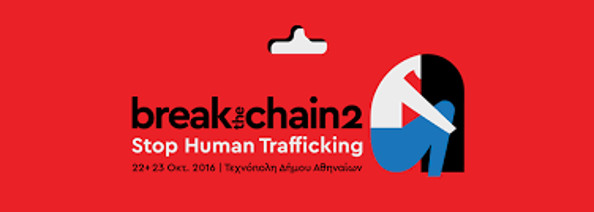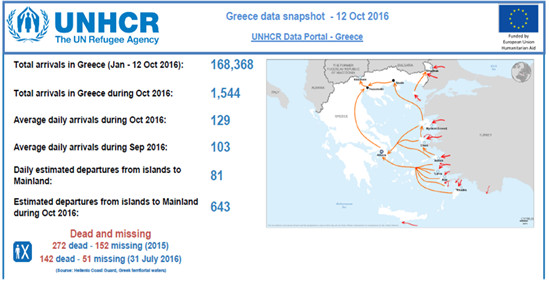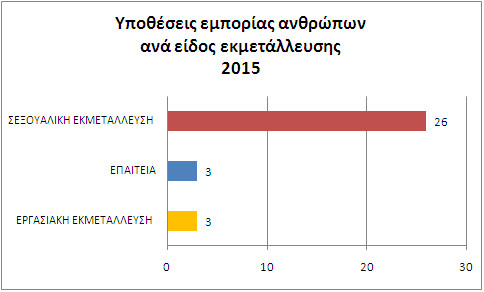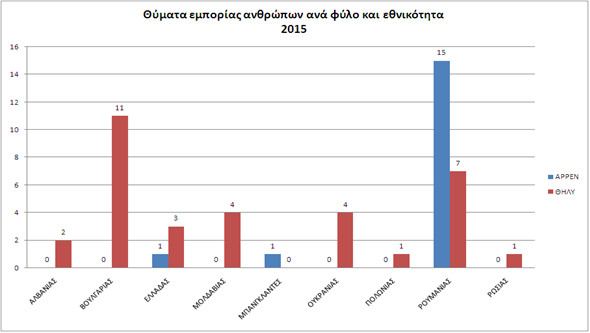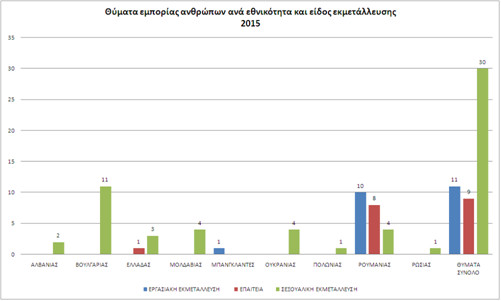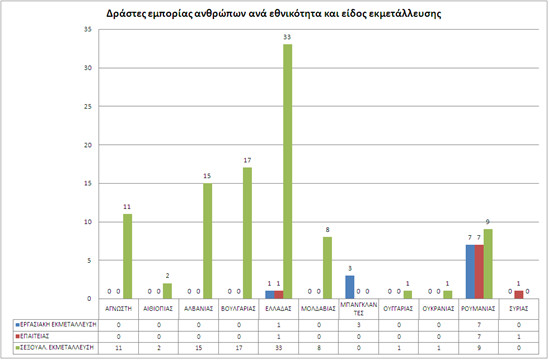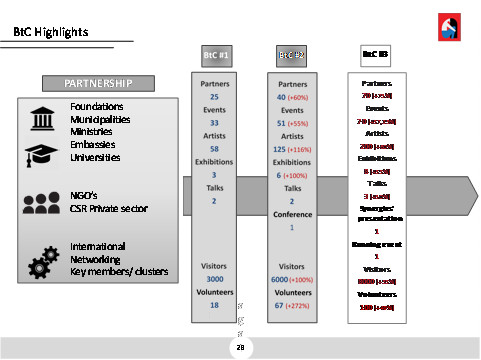- HUMAN TRAFFICKING- MODERN SLAVERY
‘’Human Trafficking, must concern every person, because it is a debasement of our common humanity. It ought to concern every community, because it tears out our social fabric. It ought to concern every business, because it distorts markets. It ought to concern every nation, because it endangers public health and fuels violence and organised crime. I’m talking about the injustice, the outrage, of human trafficking, which must be called by its true name – modern slavery.” President Barack Obama, September 25, 2012
- CAUSES OF HUMAN TRAFFICKING
Trafficking of Human Beings (THB) is a global phenomenon which is linked by a variety of factors (so-called root causes) that occur in all stages of the trafficking process: in countries of origin (poverty or unequal gender relations, natural Disasters, Climate Change), and destination (demand for cheap labour or repressive migration policies).
Providing huge profits for traffickers and organised crime syndicates and causing mass violations of human rights, human trafficking is by no means a recent phenomenon. In reality, researchers say, it is as old as the laws of offer and demand.
Trafficking destroys human dignity, severely damages basic human rights, corrupts consciences, breeds corruption, undermines international security and development, and renders huge profits to organized crime. The international economic crisis allows for this phenomenon to grow in the form of an enforcement, where the victim “accepts” his/her situation, lacking other choices and ways out of poverty.
When trafficking is dealt with as a migration issue, the question of consent versus coercion is often key to determining whether or not the person has an irregular immigration status. There is a broad spectrum of coercion at play in cases of human trafficking.
- THB and HUMAN RIGHTS
Trafficking in Human Beings (THB) occurs in most precarious sectors with weak labour rights, such as the sex industry, building and agricultural sectors, but also in private households.
Trafficked persons are exploited for their labour and experience a series of rights violations, ranging from restriction of movement and confiscation of pay, to violence and abuse.
Although trafficking is widely recognised as a serious human rights violation, support for trafficked persons is still inadequate; only a small fraction of trafficked persons is identified and an even smaller percentage decide to press charges. Despite, however, the considerable increase of the number of studies related to the subject, the actual numbers of people being trafficked is still unclear, as many cases remain unknown or victims are often afraid to come forward. At the same time, studies usually focus on victims and less on the perpetrators: the traders, the traffickers, the “clients” and all those involved in the creation of the circumstances under which trading human beings is flourishing.
- CHILD EXPLOITATION- MODERN ‘SLAVERY’
While the issue of sex trade has had a surplus of exposure to the media, often through images that are an example of merchandising pain, other forms of modern slavery are being systematically ignored, such as, for instance, the enslavement of children refugees in Turkey, who are victims of criminal activities that are among the faster growing and most profitable in the world.
Child slavery is taking place in circumstances where violence is not always physical, but quite often psychological and socio-emotional. It is often confused with child labour, but is much worse. Whilst child labour is harmful for children and hinders their education and development, child slavery occurs when a child’s labour is exploited for someone else’s gain.
Child slavery includes
- Children used by others for profit, often through violence, abuse and threats, in prostitution or pornography, forced begging, petty crime and the drug trade
- Forced child labour, for example in agriculture, factories, construction, brick kilns, mines, bars, the tourist industry or domestic work
- Children forced to take part in armed conflicts
- Children forced to marry
- TRAFFICING & SMUGGLING
Certainly a distinction must be made between trafficking and smuggling, in which case a person consents to being transported, usually for a fee.
The key difference is that the person’s relationship with the smuggler typically ends upon arrival in the destination once the fee has been repaid, whereas a person who has been trafficked continues to be exploited by the trafficker interminably.
A human rights approach allows us to go beyond the issue of determining the level of coercion to address the rights held by the victim, regardless of the circumstances in which he or she was trafficked.
- GLOBAL ANTI-TRAFFICKING MOVEMENT
The global anti-trafficking movement, now well into its second decade, has successfully used the 3Pparadigm of Prosecution, Protection, and Prevention to strengthen how the world combats trafficking in persons.
Governments committed to enhancing prosecution of traffickers have enacted laws that criminalise all forms of human trafficking and prescribe sufficiently stringent sentences. Protection efforts have empowered individuals to move beyond their victimisation and rebuild their lives with dignity, security, and respect. Prevention measures have provided communities around the world with valuable information about the risks of human trafficking, elevating public awareness about this crime.
- INTERNATIONAL LEGAL INITIATIVES
The international protections against trafficking are found in December 2000 in the Protocol to Prevent, Suppress and Punish Trafficking in Persons, Especially Women and Children . This was established as part of the UNITED NATIONS CONVENTION AGAINST TRANSNATIONAL ORGANIZED CRIME AND THE PROTOCOLS THERETO, not within the human rights system.
To help states implement this protocol through the lens of human rights, in 2002 the High Commissioner on Human Rights, Mary Robinson published the Recommended Principles and Guidelines on Human Rights and Human Trafficking, which provides a practical, rights-based policy guidance on the prevention of trafficking and the protection of trafficked persons.
The purpose of the Principles and Guidelines is to promote and facilitate the integration of a human rights perspective into national, regional and international anti-trafficking laws, policies and interventions. They are based on the understanding that states have the obligation to prosecute traffickers and provide support and assistance, including redress to trafficked persons and to protect their human rights.
The principles and guidelines stress that “violations of human rights are both a cause and a consequence of trafficking in persons. Accordingly, it is essential to place the protection of all human rights at the core of any measures taken to prevent and end trafficking. Anti-trafficking measures should not adversely affect the human rights and dignity of persons and, in particular, the rights of those who have been trafficked, migrants, internally displaced persons, refugees and asylum-seekers”.
- EU POLICY FOR THB[1]
Legislation And Case Law: Directive 2011/36/EU
-The 29th of April 2004, we have the COUNCIL DIRECTIVE 2004/81/EC on the residence permit issued to third-country nationals who are victims of trafficking in human beings or who have been the subject of an action to facilitate illegal immigration, who cooperate with the competent authorities
– The 5th of April 2011, the European Commission welcomes the publication of the new EU directive 2011/36/EU on prevention and combating trafficking in human beings and protecting its victims in the Official Journal of the European Union (OJ L 101, 1 15.4.2011).
-On 19 May 2016, after 5 years, the Commission issued its first report (COM(2016) 267 final)) on the progress made in the fight against trafficking in human beings. As its title suggests, the report is based on Article 20 of the 2011 EU Trafficking Directive (Directive 2011/36/EU).
The report has the objective to examine the progress made concerning prosecution of trafficking, protection of victims and prevention. It shows trends in trafficking, including statistical information. It is accompanied by a staff working document (SWD(2016) 159 final) that provides detailed factual information complementing the report. Notably, this is not a report on the extent to which Member States have complied with the directive. Such a report is indeed required by Article 23 of the directive;
Focusing on the above mentioned progress report, it shows that according to the information submitted by Member States for the period 2013 – 2014 there were 15 846 registered victims of human trafficking. It is noted that this number is lower than the number recorded for the previous period 2010 – 2012.
- RAISING AWARENESS
Increasing public awareness about the risks and signs of human trafficking is an important piece of any anti-trafficking prevention strategy, and to date has been the primary prevention measure used by governments and other stakeholders. Typically, public awareness campaigns target either those considered to be most at risk, such as migrant workers; those who may be contributing unwittingly or not to the demand, such as public and private employers; or purchasers of commercial sex; or the general public, who may be able to spot the indicators of human trafficking and report suspicions to law enforcement.
Anti-trafficking awareness campaigns must include an evaluation component to assess their impact and future campaigns. Often, general public awareness campaigns are limited due to the restrictions inherent in one-dimensional campaign materials such as posters, billboards, or print media advertisements, which often reduce the complexity of human trafficking into images and brief text.
While this may help to raise general awareness about the existence of trafficking, it can also misrepresent the victims and confuse the issue. For example, images of physical restraint such as handcuffs or cages may influence what the public believes constitutes human trafficking; yet movement and physical restraint are not required for a crime to be considered human trafficking. Designers of these campaigns should fully understand the scope and scale of the problem in the target community and accurately depict the nature of the crime, its victims, and the perpetrators.
In contrast to broad or national efforts, awareness campaigns can also be designed to target particular individuals, for example by notifying travellers of the illegality of child sex tourism, informing workers of their rights and risks as they migrate for a job, or adopting corporate codes of conduct.
Effective targeting should also include awareness-raising among: immigration authorities and law enforcement; diplomatic personnel; medical specialists; educational and social service personnel; and other professionals likely to come into contact with vulnerable individuals, so they are both prompted and equipped to recognize the signs of human trafficking and respond appropriately.
Together, governments, civil society organizations, and companies must collaborate to develop awareness campaigns that have clear objectives and measurable outcomes, that train and educate employees as well as relevant partners, and that promote sound anti-trafficking policies and secure reporting mechanisms.
- AWARENESS -PREVENTION & IMMIGRATION CRISIS
Taking into consideration the immigration crisis and the refugee influx to EU member states, but also the increased demand from the strong market of the West, awareness and prevention are rendered necessary, so that the refugee crisis does not evolve into an exploitation crisis and therefore into human trading.
It is here that the added value of the initiative that I am about to present to you lies, as it contributes to the improved awareness and sensitisation of citizens regarding the refugee issue, through an anthropocentric approach, with respect to human rights, to the global humanist values of democracy, to respect in the human life and to solidarity. In times when xenophobia, racism, inordinate populism and the entrenchment of borders prevail, knowledge is the best antidote to these phenomena.
- HUMAN TRAFFICKING IN NUMBERS
According to a May 2014 report from the International Labour Organization (ILO):
– An estimated 21 million victims are trapped in modern-day slavery.
Of these:
14.2 million (68%) were exploited for labour
4.5million (22%) were sexually exploited
2.2 million (10%) were exploited in state-imposed forced labour
Forced labour takes place in many different industries. Of the 14.2 million trafficking victims exploited for labour: -7.1 million (50%) forced labour victims work in construction, manufacturing, mining, or utilities, -3.4 million (24%) forced labour victims are domestic workers, -3.5 million (25%)forced labour victims work in agriculture).
-55% of trafficking victims around the world are women and girls and 45% are men and boys.
-15.4 million victims (74%) are aged 18 or older, with the number of children under the age of 18 estimated at 5.5 million (26%)
- REGIONS & THB
The Asia-pacific region accounts for the largest number of forced labourers — 11.7 million (56% of the global total). Africa has 3.7million (18%) followed by Latin America and the Caribbean with 1.8 million (9%). Countries in Central, South-Eastern and Eastern Europe and the Commonwealth of Independent States have 1.6 million (7%). The Developed Economies and European Union account for 1.5 million (7%). There are an estimated 600,000 (3%) victims in the Middle East.
- HUMAN TRAFFICKING IS BIG BUSINESS
Human trafficking earns profits of roughly $150 billion a year for traffickers, according to the ILO. The following is a breakdown of profits, by sector:
-$99 billion from commercial sexual exploitation
-$34 billion in construction, manufacturing, mining and utilities
-$9 billion in agriculture, including forestry and fishing
-$8 billion dollars is saved annually by private households that employ domestic workers under conditions of forced labour
- GREECE DEALING WITH HUMAN TRAFFICKING
Human trafficking in Greece mostly is linked with the immigration issue due to its Strategic position: Europe’s border, geographical proximity to third countries that are going through war (like Syria), but also to other countries such as Iraq, Pakistan, Iran, Eritrea and other African countries.
The cross point in the route of these immigrants to Europe via Greece is the neighbouring Turkey, with about 3M immigrants currently at the Turkish coasts trying to find a way to get to Europe.
[1] More information we can find on the EU Anti Trafficking Website – European Commission for EU Actions • Case Law, etc (ec.europa.eu/anti-trafficking/)
And these are the official numbers; but we all know that there are many more immigrants who are not identified and even their death or disappearance is not registered.
- HUMAN TRAFFICKIN- NUMBERS SPEAK
Official numbers that the Hellenic Police has on human trading in 2015 in our country (Source: Ministry of Internal Affairs and Administrative Reconstruction – Hellenic Police)
VICTIMS OF HUMAN TRADING PER SEX AND NATIONALITY (2015)
VICTIMS OF HUMAN TRADING PER NATIONALITY AND TYPE OF EXPLOITATION (2015)
(Labour Exploitation (Blue)-Beggary (Red) –Sexual Exploitation (Green)
PERPETRATORS OF HUMAN TRADING PER NATIONALITY AND TYPE OF EXPLOTATION
- NATIONAL LEGISLATION
In the framework of the aligning its national legislation (N. 4198/2013) with international models and the relevant EU legislation (Directive 2011/36), Greece establishes, through its Ministry of Foreign Affairs a National Coordination Mechanism (25/11/2013) and creates the Office of the National Rapporteur for Fighting Human Trading.
Its aim is to develop a comprehensive approach and cooperation between organisations, based on the model “proactive Prosecution, Protection, Prevention and Partnership”, which means that it includes actions in these areas. It also seeks to create a mechanism for coordinating all the national agencies – a National Referral Mechanism, aiming at the successful identification, referral and support of the victims.
The main priorities of the Office of the National Rapporteur are the completion of the National System of Reference for the identification of victims, the creation of a National Data Base, the training of institutions and the strengthening of the cooperation with all those active in the area of sensitisation of the general public.
- “BREAK THE CHAIN2’ (B+C) IS BORN
In the framework of the sensitization of the general public, a multi-partnered campaign for social awakening was created, which, through Art, Culture and Education, aims at informing, sensitizing and urging the general public to participate in a social front that goes against exploitation and human trading, modern slavery.
Break the Chain2 was created, an innovative initiative of the National Rapporteur for fighting Human Trafficking in cooperation with the cultural platform elculture.gr
Elculture, an NGO that is concerned with Art and Culture, took on the coordination of the whole endeavour, following these steps:
- Recording and communicating with artists and institutions (Society of Citizens, Businesses, etc.) who operate within this field, creating an “ecosystem” that will embrace this initiative.
2.Creating a digital platform including all the institutions involved (a database)
3.Creating the brand -Break the Chain- which started to act as an umbrella and created an ecosystem of institutions as well as a wider framework of cooperations.
4.Putting together a Master Plan for the actions and initiatives that will develop in the framework of this initiative.
5.Finding funding, sponsorships etc. for its realisation.
- WHAT IS THE AIM OF THIS SENSITISATION CAMPAIGN- A HUMAN RIGHT APPROACH
The campaign is based on the Standards and Principles of Universality, of Participation, of Indivisibility and of Accountability.
The sensitisation campaign has many different action areas and seeks, through art, culture and education, to reduce the demand as human trafficking is based on the demand of the markets of the West, either for cheap and flexible labour or for human consumer products of trafficking (forced labour, prostitution, beggary, human organ trafficking, petty-crime).
Break the Chain, through multi-themed actions, the active participation of the audience (children, students, citizens, residents) and education, aims to change behaviours in society gradually, with its primary aim the reduction of the demand.
- VISION AND MISSION
Our mission is to make BtC a trans-border prevention vehicle , to motivate, educate and activate people to fight against human exploitation and to promote the experience and know-how of B+C2 to other geographical areas within and outside Greece.
We are currently preparing the development of the initiative “Break the chain2 in the Aegean”, in the Aegean islands, which face the greatest burden of the immigration problem.
‘Break the Chain2 is in its 3rd year and has already found thousands of recipients and supporters. Our community is constantly strengthening its voice and builds even stronger synergies. We do not want to be one more platform of meetings and repeat monotonously the same conclusions amongst the people, but to attract collectivities that have not have up to now a point of reference. Our vision is to fight modern slavery and to become an example to emulate. To become the proof that culture brings people closer to the realization of their own responsibility and potential to contribute to a more just society of humanism and solidarity’. (Statement of the National Rapporteur for Fighting Human Trading of the Ministry of Foreign Affairs, Mr. Iraklis Moscof.)
- FIELD Of ACTIONS
Child and Woman are the main targets of our campaign
-In the field of Education
– Educational programs in public schools -Employee training – Training of workers in organizations which serve as entry points of potential victims (e.g. port authorities, employees of airlines, airports and public transport).
-Pilot programme “Open schools”
Schools are places of formal education, spaces where consciousness and identity is formed, and are the ideal areas for the creation of a locus of information, sensitization and action. Through the “Open Schools” programme, we believe that citizens will be given the ability to become themselves torches of light in transmitting the message of “Break the Chain2”.
Children and parents/residents in the neighbourhood are called to participate actively in the creative laboratories of the Athens Comic Library and of AMAKA, so that through their activities they become deeply sensitised on the polymorphic phenomenon of Human Trafficking and realise the imperative need for fighting it.
-Corporate Social Responsibility
– Shield supply chains from exploitation -Create consumer’s zero tolerance consciousness – Premium companies which have a clear social footprint ( e.g. ‘The dark side of the chocolate’
‘Break the Chain2’ Festival
Taking advantage of the European Day against Human Trading, we are organising on the 22nd and 23rd October the Break the Chain Festival. We have already had 2 and now we are in process of holding the 3rd at Technopolis of the Municipality of Athens, where we will have the opportunity to present all the actions and initiatives that have been created within the framework of B+C.
The innovation of Break the Chain2 is the fact that it calls forth people to submit their opinion on issues that have not yet become the subject of a public debate, such as the connection between immigration and refugee flows and human trading and exploitation, the contribution to identification of victims of institutions that have yet to be activated (e.g. hospitals, the private sector), forced criminality, survival sex and the whole area of prostitution, the exploitation from family members (low level exploitation), the imperative need for human rights to be taught at school, etc.
- ECOSYSTEM
Break the Chain2 poses as an exceptional example for multi-sectoral cooperation on the issue of human exploitation and trading. The concurrent presence of artistic and scientific propositions, added to the institutional and organisational interventions, was the necessary ingredient that was missing, in order to ensure the dynamic of the sensitisation campaign and the information of the general public.
The ‘Break the Chain’ community is convinced that “individual actions do not have the same dynamic, unless added up”. We seek to build synergies to all directions (institutional partners, government agencies, local/regional government, NGOs, the private sector, sectoral organisations, art/culture, universities/schools, embassies, institutions, etc.). Our objective is to have BtC2 established as a point of reference and a cooperation platform within the ecosystem of our partners, instituting a “founding act” for a living community of active citizens that does not want to remain uninvolved.
- B+C AND HIGHLIGHTS
- END
‘I have no identity, I have no pride… but my name is Patience’ , the words of a woman from Syria, victim of THB.
-It could be anyone…
-We have to work all together to break the Chain2 …. To stop modern slavery…
-We have to join our voices, our efforts to Stop human Trafficking through Education, Arts and Culture
Thank you for your attention
Eleftheria Ftaklaki
Policy Maker in European Affaires
PhD Candidate at the University of Aegean
Regional Councillor of South Aegean Governance
